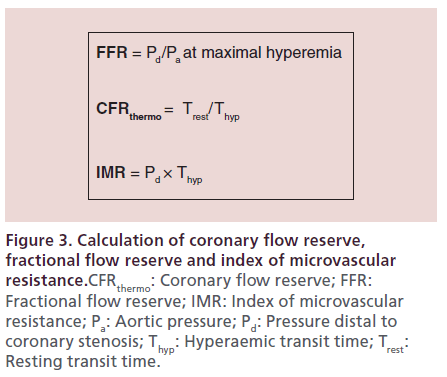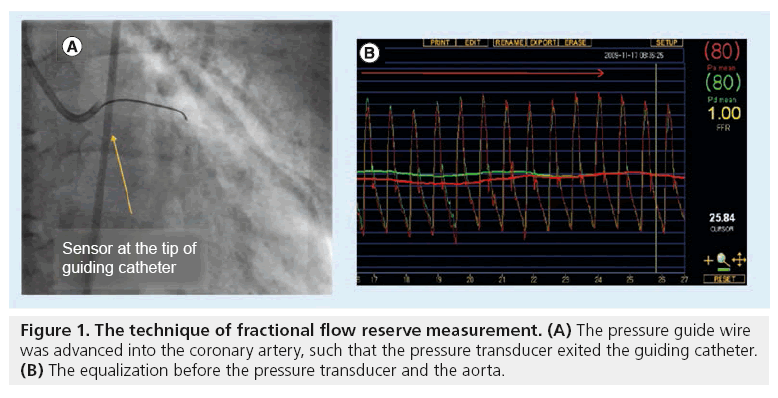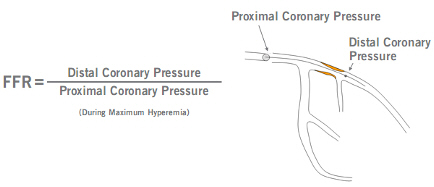fractional flow reserve formula
Corrected FFR for the proximal left and distal right lesions as a function of Pw. Interventional Cardiac Catheterization Handbook Second Edition 2004.

Virtual Resting Pd Pa From Coronary Angiography And Blood Flow Modelling Diagnostic Performance Against Fractional Flow Reserve Heart Lung And Circulation
Simplified formula to calculate the predicted fractional flow reserve FFR for each lesion in sequential coronary stenosis.

. Fractional flow reserve is calculated as the ratio of the maximum blood flow distal to the stenosis divided by the maximum flow proximal to the stenosis. There has been debate regarding the reliability of FFR or iFR for nonculprit. The blue curve refers to the best fitting regression R 2 0581 predicted on the basis of the theoretically derived formula FFR P D c 1 c 2 P D.
The goal of angioplasty and stenting in the coronary arteries is to increase blood flow to the heart and in turn relieve chest pain. The method in some embodiments further comprises obtaining a flow characteristic of the stenotic model and calculating an index indicative of vascular function based at least in part on the flow characteristic in the stenotic model. Fractional flow reserve FFR against post-stenotic mean pressure P D.
Fractional flow reserve FFR measurement involves determining the ratio between the maximum achievable blood flow in a diseased coronary artery and the theoretical maximum flow in a normal coronary artery to determine the likelihood that the stenosis impedes oxygen delivery to the heart muscle. This will measure the flow and pressure of the blood. The coronary pressure wire is a small wire with a pressure sensor near its tip that can be placed beyond the moderate narrowing.
Complications include coronary vessel perforation embolism infection in the site spasm of the blood vessel kidney failure heart attack stroke and serious arrhythmias irregular heartbeat. Myocardial Fractional Flow Reserve Fractional Flow Reserve PdPa During Hyperaemia Figure 2. A simplified formula to calculate the predicted fractional flow reserve FFR in sequen-tial coronary stenosis without balloon inflation is hereby proposed.
Fractional flow reserve FFR is an invasive measurement developed in 1990s for evaluation of functional significance of stenoses in the epicardial coronary artery. In patients with an indication for FFR and sequential coronary stenosis FFR was recorded distally and between the lesions. Usually a fractional flow reserve value of one is accepted as normal whereas values lower than 075 generally indicate a heart attack.
More slides Presentation Stanford Coronary Physiology Conference 2017. The myocardial fractional flow reserve FFR is clinically used as a stenosis-specific indexAim. To minimize the effect of wedge pressure Pwedge FFR is measured during hyperemia conditions and iFR is calculated as the ratio of distal and aortic pressures.
Fractional Flow Reserve FFR Fractional flow reserve FFR is an index that can be measured with a coronary pressure wire in a patient with a moderate narrowing of unclear significance. Fractional Flow Reserve. An FFR of 10 is widely accepted as normal.
General description of procedure equipment technique. The fractional flow reserve value is displayed on the monitor attached. FFR is defined as the mean distal coronary pressure measured with the pressure wire divided by the mean proximal coronary or aortic pressure measured with the guide catheter during maximal hyperemia.
The predicted FFR for each stenosis was calculated with a novel formu-la. Fractional flow reserve is the ratio of maximum flow in the presence of a stenosis to the theoretical maximum flow if the artery were normal. A fractional flow reserve FFR is a procedure done during cardiac catheterization to estimate the degree of blockage in the coronary arteries.
FFR is defined as a ratio of the maximal myocardial blood flow in the presence of a stenosis to the theoretical normal. Thus the formula becomes FFR Pd Pv R 2 under maximum hyperemia Pa Pv R 1 under maximum hyperemia. Background and objectives Fractional flow reserve FFR and instantaneous wave-free ratio iFR are the two most commonly used coronary indices of physiological stenosis severity based on pressure.
Calculating a fractional flow reserve - Google Patents Calculating a fractional flow reserve Download. With the administration of intravenous adenosine the fractional flow ratio decreases to 067 indicating that the lesion is hemodynamically significant. The higher the fractional flow reserve value the lower the chances of any abnormality.
The aim of this study was to compare the changes of fractional flow reserve FFR or instantaneous wave-free ratio iFR with severity of epicardial coronary stenosis between nonculprit vessel of acute myocardial infarction AMI and stable ischemic heart disease SIHD. Diagnosis and Treatment Based on Fractional Flow Reserve and Coronary Flow Reserve Values The diagnostic categorisations and treatment recommendations are provided as an indicative guide. Multiple methods for non-invasively calculating fractional flow reserve FFR have been developed based on coronary computed tomography angiography CCTA images and all have been reported to add an incremental diagnostic value to conventional CCTA using invasive FFR as a reference 123456However variations have been reported in.
However studies have shown that if a functional measurement such as FFR shows that the flow is. FFR PdPa Pd pressure distal to the lesion Pa pressure proximal to the lesion Rationale. FFR is the ratio of the coronary pressure beyond the.
Tips Tricks and Avoiding Pitfalls. Fractional flow reserve FFR is the ratio of maximum blood flow distal to a stenotic lesion to normal maximum flow in the same vessel. Coronary arterial stenosis may impair myocardial perfusion with myocardial ischemia and associated morbidity and mortality as result.
This study aims to identify the relation between the FFR and the degree of coronary arterial stenosis using a simple mathematical. The decision to perform a percutaneous coronary intervention PCI is usually based on angiographic results alone. Fractional flow reserve measurement FFR.
This translesional pressure ratio during maximum flow expresses the functional significance of a coronary lesion. The function has been represented in four different combinations of PaPd measured distally and between the lesions. J-shape of Pijls formula to calculate fractional flow reserve FFR in sequential lesions as a function of coronary wedge pressure Pw.
Fractional Flow Reserve FFR offers yet another tool to assist in identification of those intermediate blockages.

Intracoronary Optical Coherence Tomography Derived Virtual Fractional Flow Reserve For The Assessment Of Coronary Artery Disease American Journal Of Cardiology

Current Frontiers In The Clinical Research Of Coronary Physiology

Impact Of Hydrostatic Pressure On Fractional Flow Reserve In Vivo Experimental Study Of Anatomical Height Difference Of Coronary Arteries Journal Of Cardiology

The Impact Of Virtual Fractional Flow Reserve And Virtual Coronary Intervention On Treatment Decisions In The Cardiac Catheter Laboratory Canadian Journal Of Cardiology

Fractional Flow Reserve A New Paradigm For Diagnosis And Management Of Patients With Coronary Artery Disease
Process Of Computational Fractional Flow Reserve Ffr Calculation A Download Scientific Diagram

Fractional Flow Reserve Coronary Flow Reserve Imr Microvascular Resistance

Fractional Flow Reserve Ffr Cathlab Com

Fractional Flow Reserve Coronary Flow Reserve Imr Microvascular Resistance

Cfr And Coronary Capacity For Prognosis Ppt Download

Theoretical Expressions Of Ffr And Cfr Ffr Can Be Expressed As A Download Scientific Diagram

Fractional Flow Reserve Coronary Flow Reserve Imr Microvascular Resistance

Fractional Flow Reserve To Guide Coronary Revascularization Semantic Scholar

Fractional Flow Reserve Ffr In The Presence Of Serial Stenoses In A Download Scientific Diagram

Fractional Flow Reserve An Overview Sciencedirect Topics

Fractional Flow Reserve Ffr Established Measures Grepmed

Rfrist Study Fractional Flow Reserve In Functional Quantification Of Renal Allograft Artery Stenosis Rationale And Study Design Revista Brasileira De Cardiologia Invasiva English Edition